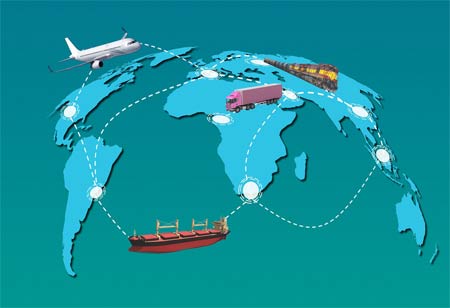Key Innovations in Air Freight Packaging
Sustainable Packaging Materials: The industry increasingly adopts biodegradable and recyclable materials to mitigate environmental impact while ensuring protective qualities. Lightweight materials are utilized to minimize weight, reducing fuel consumption and carbon emissions. Additionally, plant-based alternatives are providing eco-friendly and biodegradable options.
Advanced Packaging Technologies: Innovations include shock-absorbing materials to safeguard fragile items from vibrations and impacts during transit. Temperature-controlled packaging solutions maintain optimal conditions for perishable goods, pharmaceuticals, and sensitive electronics. Moisture-barrier packaging prevents damage from humidity and condensation. Furthermore, RFID and IoT integration enable real-time tracking and monitoring of shipments.
Intelligent Packaging Solutions: Sensor-based packaging can now detect and alert to potential damage, temperature fluctuations, or unauthorized access. Smart labels are enhancing product information, tracking data, and authentication. Predictive analytics are being used to optimize packaging design and minimize waste.
Customized Packaging Solutions: Tailored packaging designs address specific product requirements to ensure optimal protection. Modular packaging systems offer flexibility and adaptability for varying shipment sizes and configurations. Advances in 3D printing facilitate rapid prototyping and customization of packaging solutions.
Automation and Robotics: Automated packaging lines increase efficiency and reduce labor costs. Robotic palletizing and unitizing optimize load factors and minimize damage.
Benefits of Innovative Packaging Solutions: These advancements enhance product protection, reduce losses, and improve supply chain efficiency by streamlining processes and cutting handling time. Cost savings are achieved through optimized packaging materials and reduced waste, while customer satisfaction is elevated by delivering products in excellent condition. Furthermore, using sustainable materials and practices contributes to a reduced environmental impact.
Future Trends in Air Freight Packaging: Emerging trends include nanotechnology for materials with enhanced protective properties and reduced weight, biomimicry inspired by natural systems for innovative packaging solutions, and artificial intelligence for optimizing design and logistics. The circular economy is also gaining traction, promoting the reuse and recycling of packaging materials.
Advanced packaging technologies offer enhanced protection and efficiency for various products. Phase Change Materials (PCMs) are designed to absorb and release heat, maintaining a consistent temperature within the package. This is particularly beneficial for temperature-sensitive items such as pharmaceuticals and perishable goods. Vacuum-sealed packaging helps prevent damage from oxidation, moisture, and crushing. Inflatable packaging provides cushioning and protection for fragile items while minimizing packaging volume and weight. Furthermore, intelligent packaging solutions utilizing RFID and QR codes facilitate real-time shipment tracking, verification, and authentication, enhancing supply chain visibility and security.










